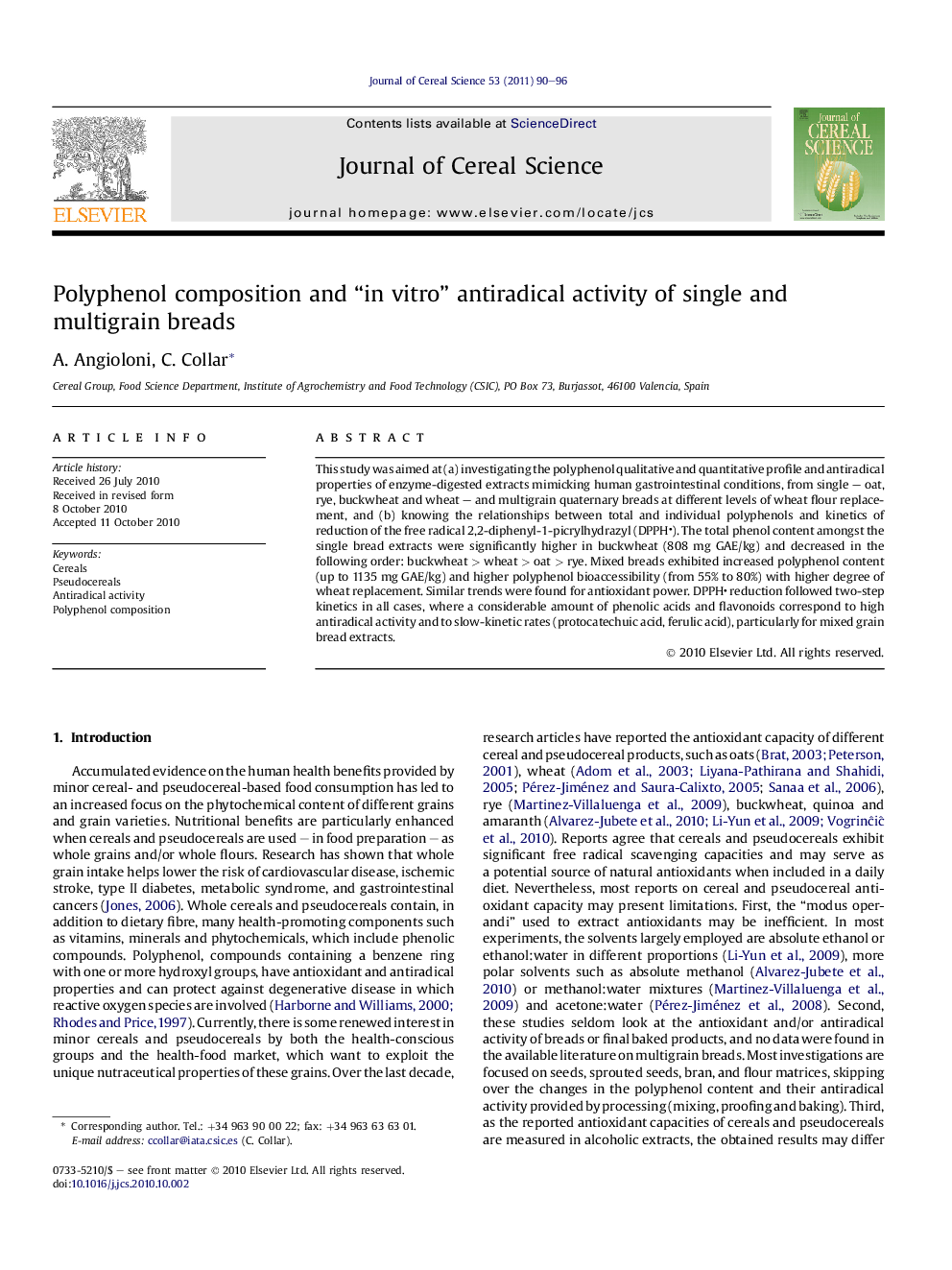| Article ID | Journal | Published Year | Pages | File Type |
|---|---|---|---|---|
| 6378196 | Journal of Cereal Science | 2011 | 7 Pages |
This study was aimed at (a) investigating the polyphenol qualitative and quantitative profile and antiradical properties of enzyme-digested extracts mimicking human gastrointestinal conditions, from single - oat, rye, buckwheat and wheat - and multigrain quaternary breads at different levels of wheat flour replacement, and (b) knowing the relationships between total and individual polyphenols and kinetics of reduction of the free radical 2,2-diphenyl-1-picrylhydrazyl (DPPH). The total phenol content amongst the single bread extracts were significantly higher in buckwheat (808 mg GAE/kg) and decreased in the following order: buckwheat > wheat > oat > rye. Mixed breads exhibited increased polyphenol content (up to 1135 mg GAE/kg) and higher polyphenol bioaccessibility (from 55% to 80%) with higher degree of wheat replacement. Similar trends were found for antioxidant power. DPPH reduction followed two-step kinetics in all cases, where a considerable amount of phenolic acids and flavonoids correspond to high antiradical activity and to slow-kinetic rates (protocatechuic acid, ferulic acid), particularly for mixed grain bread extracts.
